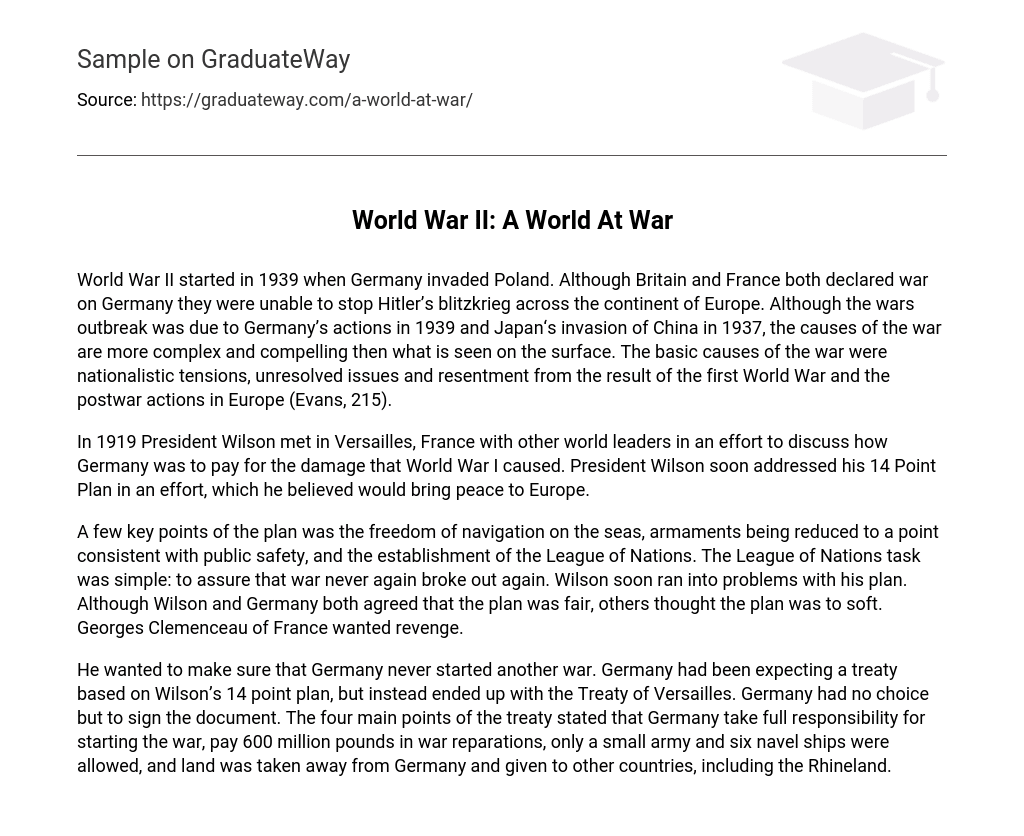World War II started in 1939 when Germany invaded Poland. Although Britain and France both declared war on Germany they were unable to stop Hitler’s blitzkrieg across the continent of Europe. Although the wars outbreak was due to Germany’s actions in 1939 and Japan‘s invasion of China in 1937, the causes of the war are more complex and compelling then what is seen on the surface. The basic causes of the war were nationalistic tensions, unresolved issues and resentment from the result of the first World War and the postwar actions in Europe (Evans, 215).
In 1919 President Wilson met in Versailles, France with other world leaders in an effort to discuss how Germany was to pay for the damage that World War I caused. President Wilson soon addressed his 14 Point Plan in an effort, which he believed would bring peace to Europe.
A few key points of the plan was the freedom of navigation on the seas, armaments being reduced to a point consistent with public safety, and the establishment of the League of Nations. The League of Nations task was simple: to assure that war never again broke out again. Wilson soon ran into problems with his plan. Although Wilson and Germany both agreed that the plan was fair, others thought the plan was to soft. Georges Clemenceau of France wanted revenge.
He wanted to make sure that Germany never started another war. Germany had been expecting a treaty based on Wilson’s 14 point plan, but instead ended up with the Treaty of Versailles. Germany had no choice but to sign the document. The four main points of the treaty stated that Germany take full responsibility for starting the war, pay 600 million pounds in war reparations, only a small army and six navel ships were allowed, and land was taken away from Germany and given to other countries, including the Rhineland.





